temple blessings
temple blessings
Mumbai, India
The temple bell stops—
but the sound keeps coming
out of the flowers.
— Matsuo Bashō, 1644-1694 (translated by Robert Bly)
In Hindu temples across India, devotees offer gifts of flower garlands to invoke the blessings of deities. Every day, wilted blossoms are replaced with fresh garlands, pleasing the gods with their fragrance and color. The previous day’s blessed offerings, or nirmalya, are carefully gathered and disposed of in water, as is Hindu ritual.
The Siddhivinayak Temple in Mumbai, one of the country’s most visited, sees approximately 4.8 million worshippers a month. Bearing gifts of flowers and coconuts, they call on Ganesha, god of wisdom, knowledge, and new beginnings. Stalls line the temple complex displaying sweets and flowers. Each of the vendors sells 20+ kilograms of flowers a day; over 500 kilograms of flowers are discarded by the temple to make room for the next day’s offerings.
Adiv, a natural dye workshop in Mumbai, partners with Siddhivinayak to receive its discarded nirmalya. Marigolds, roses, hibiscus, and coconut husks are collected, sorted, and used to dye cloth. Onion skins and pomegranate husks donated by local food vendors are also used. Only ingredients that are ayurvedic, or pharmaceutical or food grade are used for dyeing, and nothing with any food value. At the end of the process, materials are composted.
Dyeing is an elemental process. Just a few items are required: water, petals, fabric, mordant when needed, a steamer. Each piece of cloth is prepared one at a time, often by two people working swiftly and seamlessly in unison. To create various textures, the petals, husks, and skins are used whole or pulverized, wet or dry. For Adiv’s “idli technique,” named after a popular Indian food item, fabric is layered with petals and neatly folded onto itself forming a small packet, like a parcel of food. Each packet is steamed for 30-40 minutes before it is unfolded, shaken free of petals, rinsed, and hung to dry. Occasionally, a petal or two will evade inspection and remain stuck to the fabric – a welcome sign of work done by human hands. The process produces a monoprint, where the petal’s shapes are transferred directly onto fabric leaving an imprint of color. Depending on weather and humidity, the same flower yields surprising dye variations of color and lushness.
dosa began collaborating with Adiv in December of 2014. The organization, founded in 2006 by Rupa Trivedi, is a business and social venture in Mumbai dedicated to natural hand dyeing. Adiv empowers its young, self-taught artisans through steady employment and creative freedom. Each came to the center with zero dyeing experience, learning new techniques through trial and error. Two Saturdays a month are dedicated to experimentation. Workers keep a daily journal of processes to ensure that results can be duplicated. What began as two pots in a kitchen has grown to foster a small group of young men and women into skilled, steady income earners. As Adiv expands, new jobs and new opportunities continue to be created.
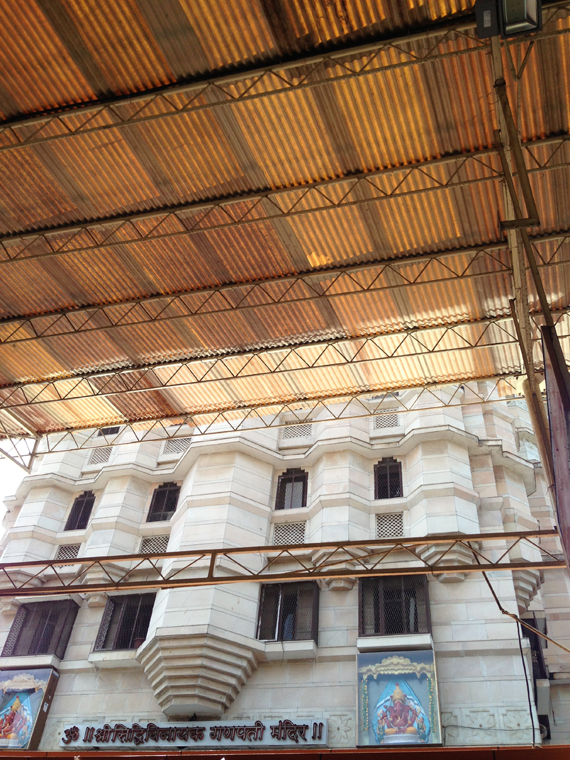
Siddhivinayak Temple, Mumbai
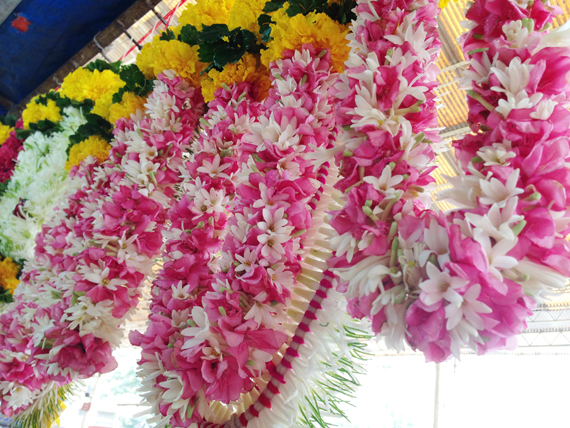
garlands of hibiscus, jasmine, marigold

one of many vendors displays garlands and sweets
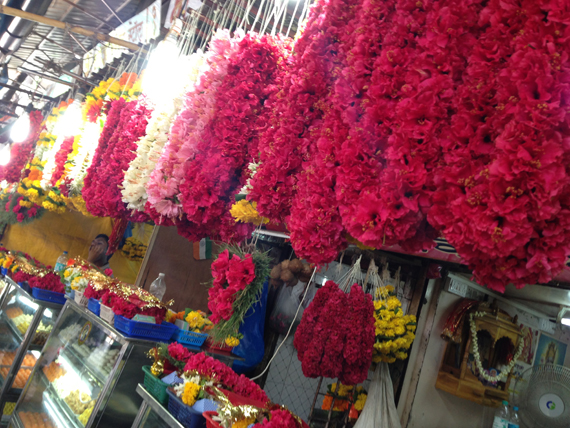
red hibiscus, a favorite of Ganesha, the Elephant God

gajra, flower hair ornaments for young girls
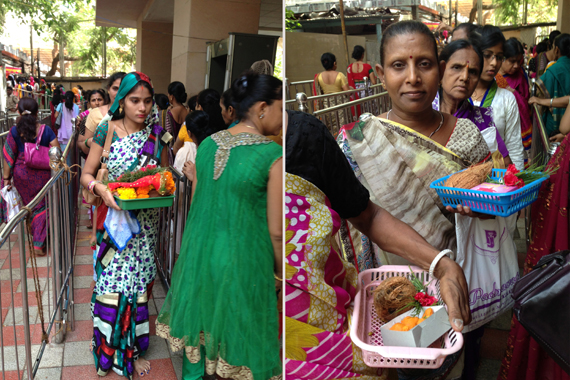
worshippers wait to enter with offerings
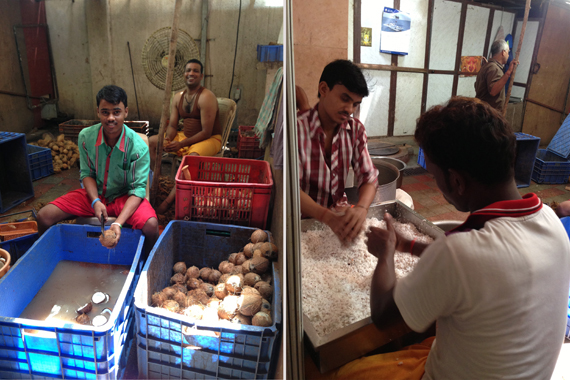
coconut blessed by Hindu priests are used to make prasad, a food offering given to devotees
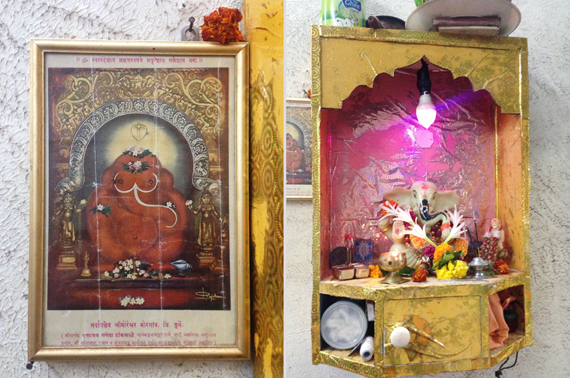
image of Ganesha in Adiv’s workshop
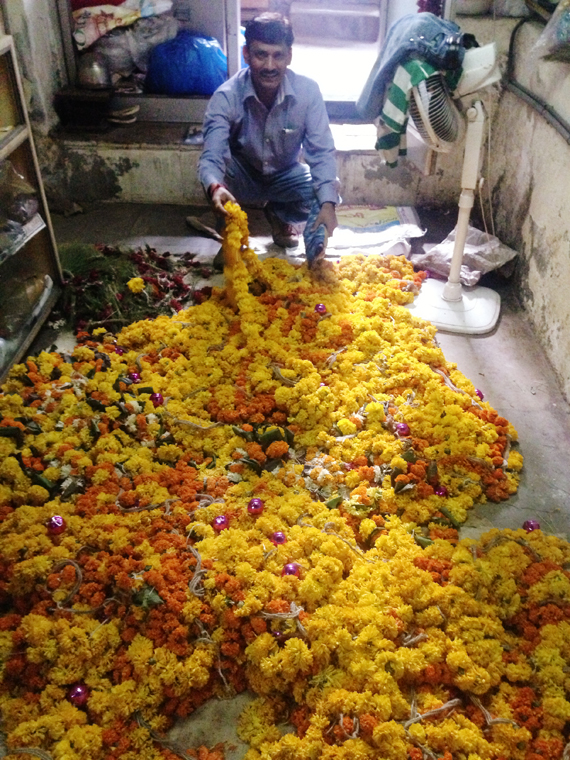
temple flowers carpet the floor at Adiv
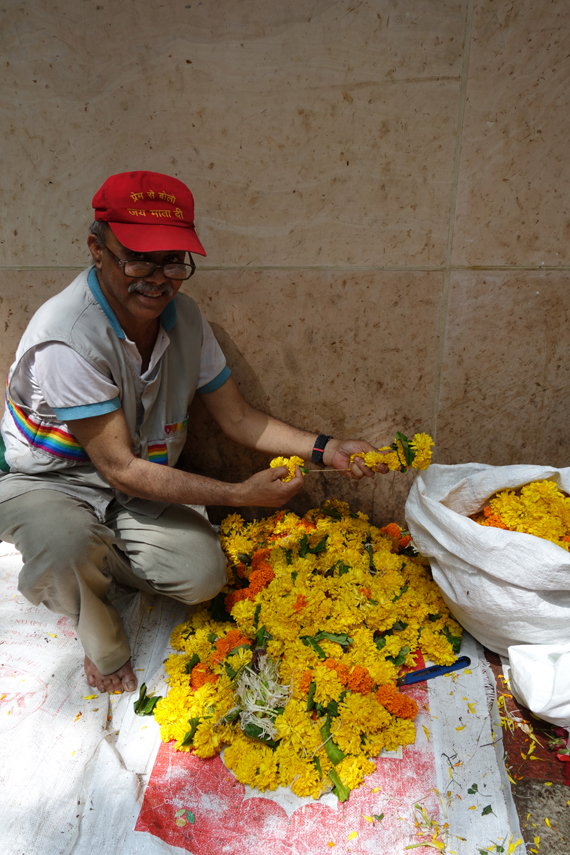
Vinod sorts offerings at the temple
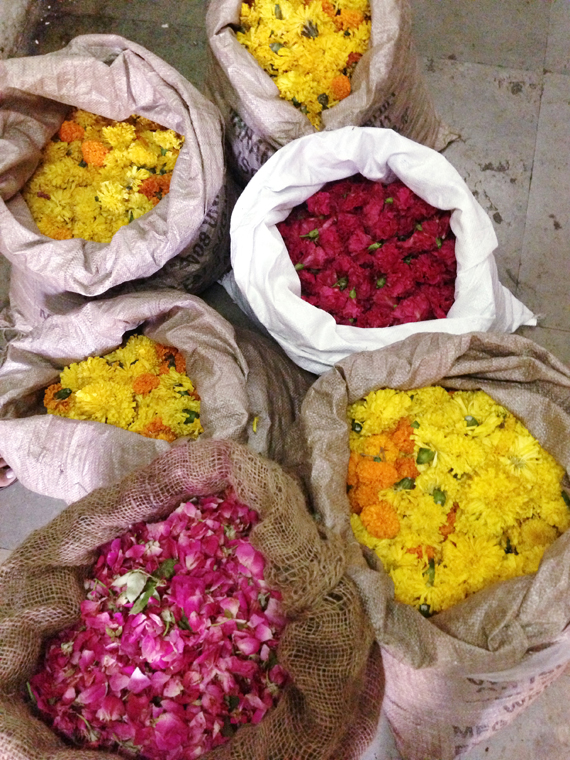
sorted sacks of hibiscus, marigold, and rose
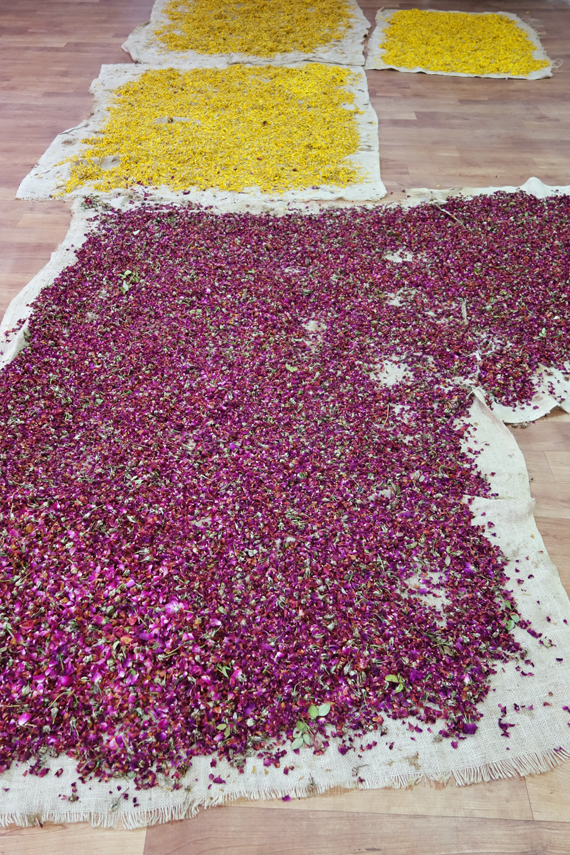
rose and marigold petals drying
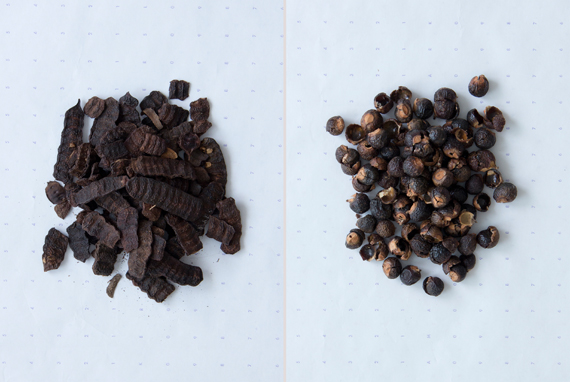
shikakai and soapnut, used together as soap

scouring fabric with soapnut and shikakai

mordanting for 30 minutes

measuring 12”
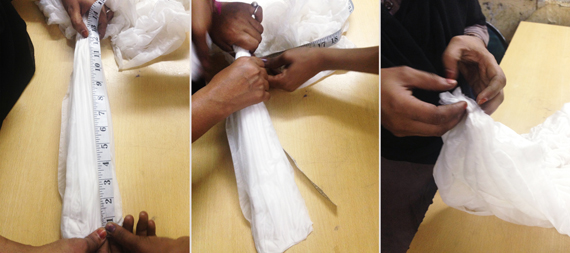
tying off fabric to be resisted or undyed at both ends
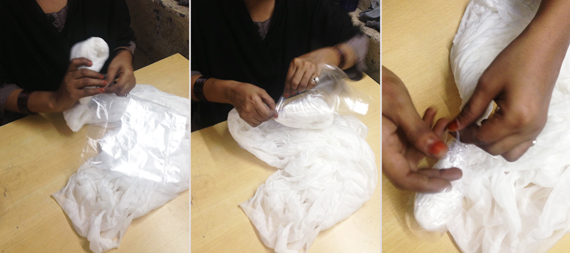
tightly wrapping resist area in plastic
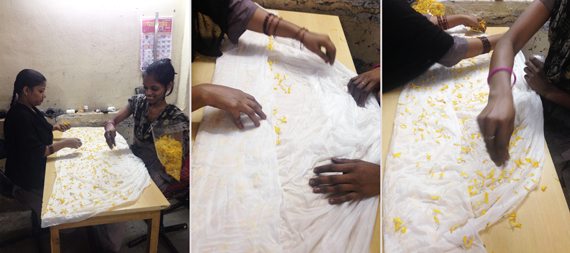
scattering and folding marigold petals into the fabric
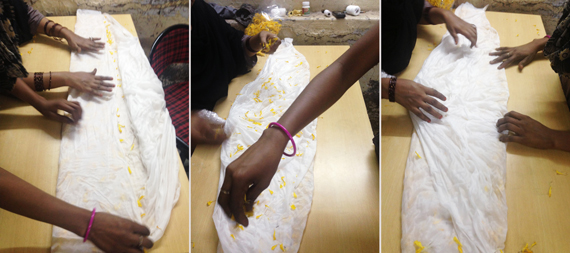
working in tandem
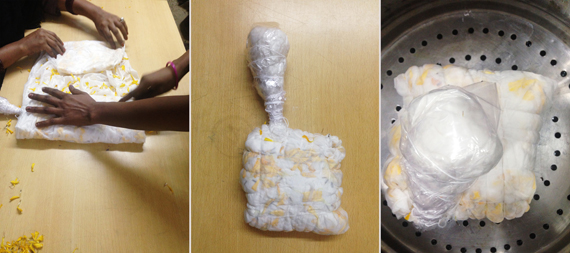
fabric is folded into a 5x5” square, bound loosely with string, and steamed
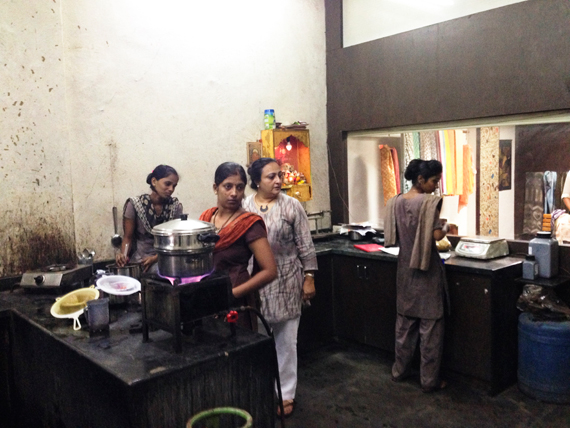
Rupa and artisans wait during steaming
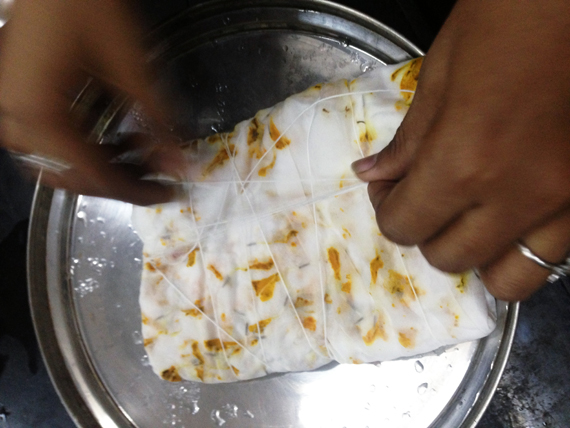
the parcel is untied after 30 minutes
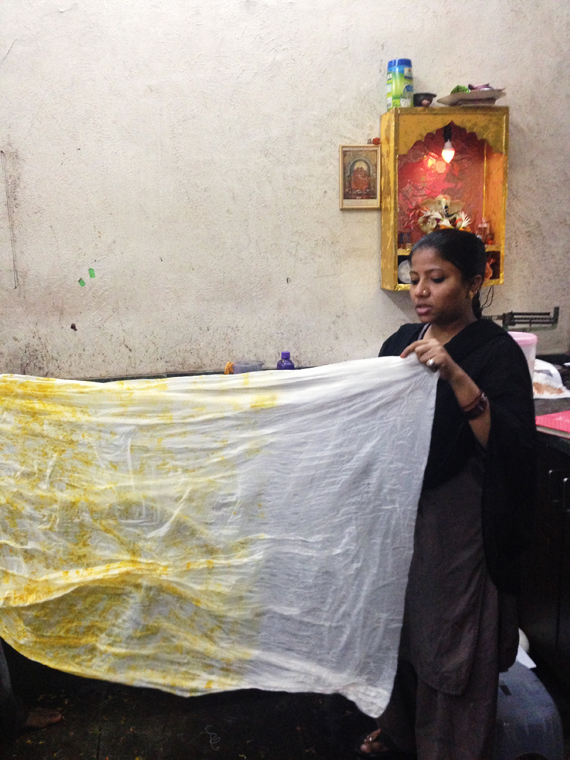
shaking off the petals
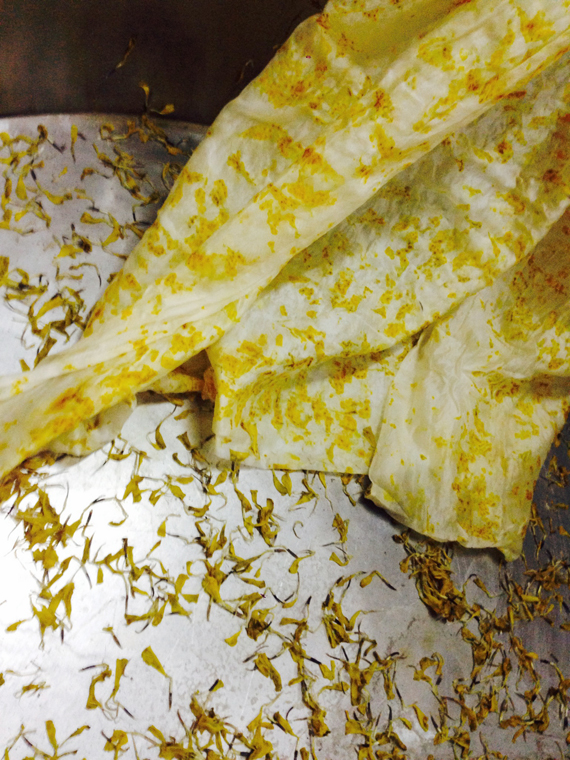
petals are collected for compost
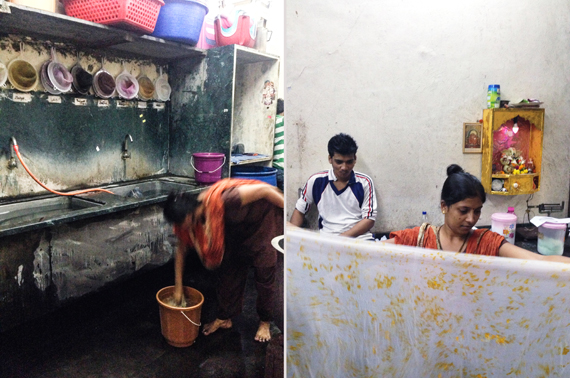
rinsing in cold water and hanging to dry
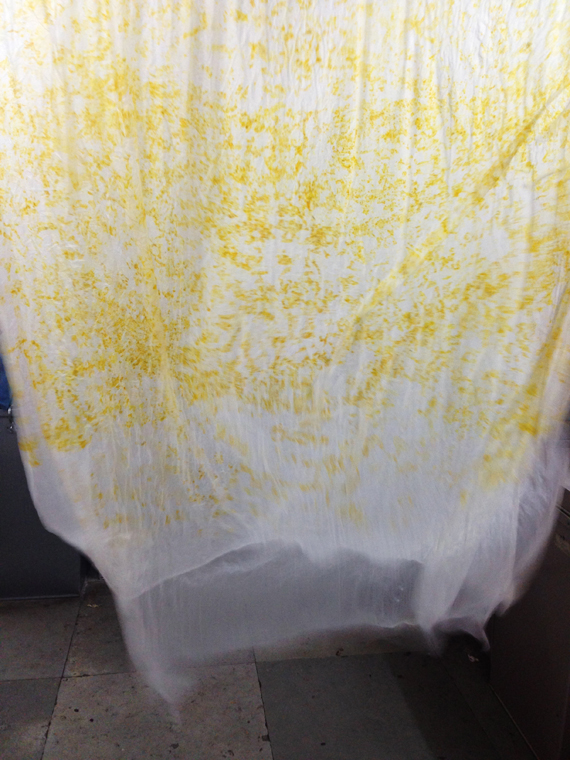

garland of dried red hibiscus; fresh rose petals

dried rose petals; onion skins
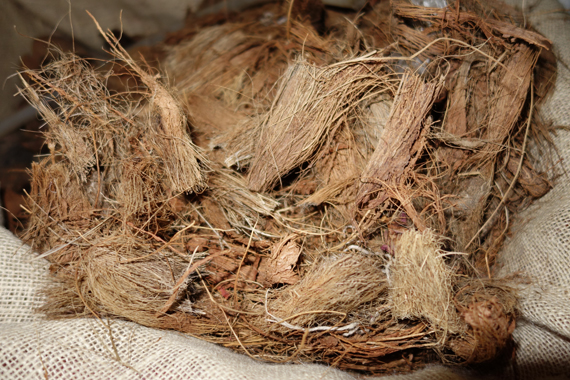
coconut husks
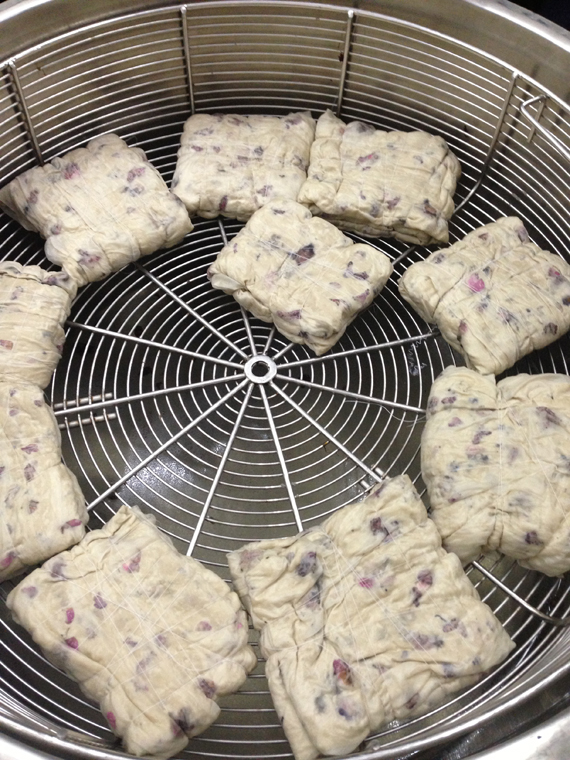
a new steamer accommodates larger batches

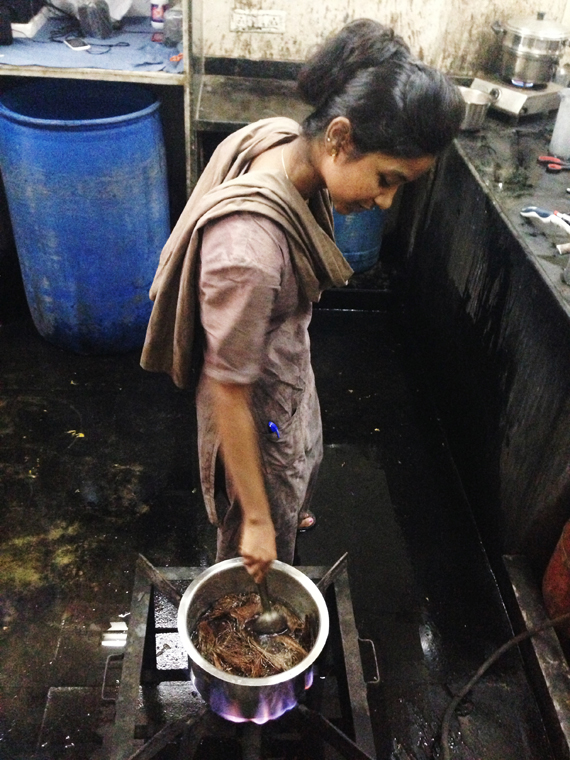
coconut husk dye bath is stirred 40 minutes in preparation for solid colors
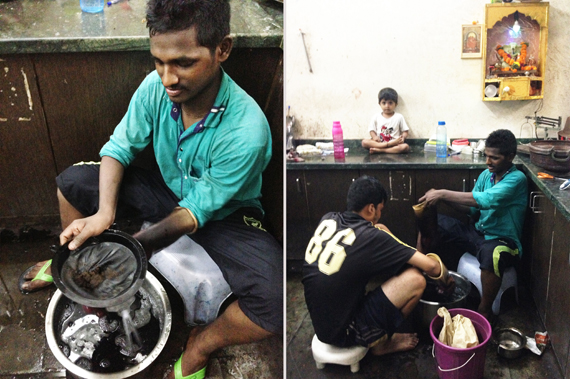
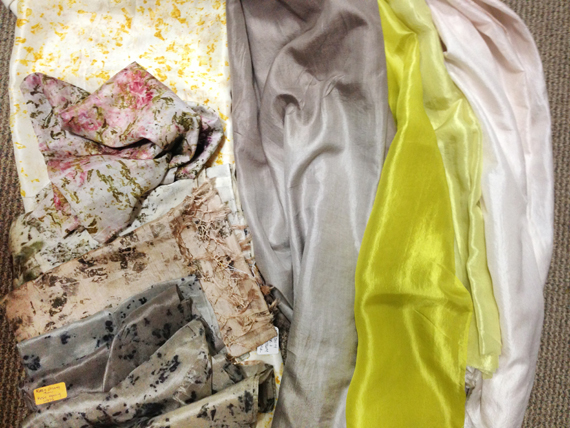
dye swatches from Adiv for Traveler 2015
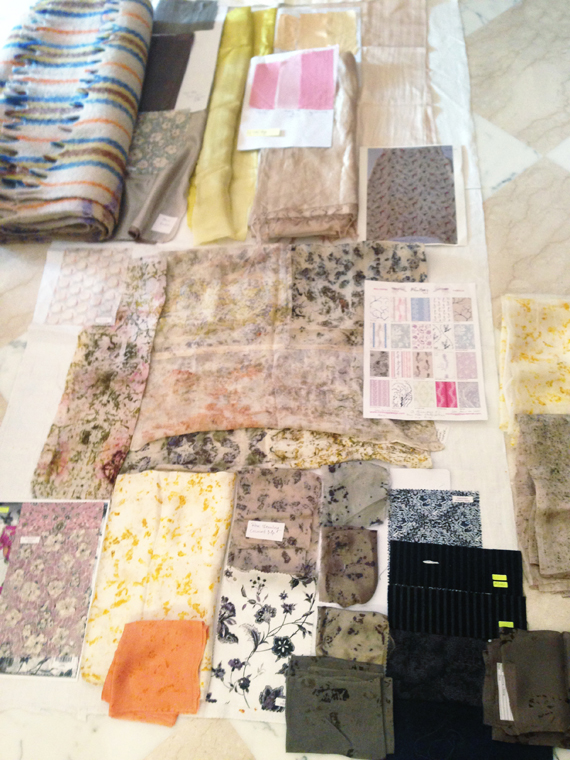
Traveler 2015 colors
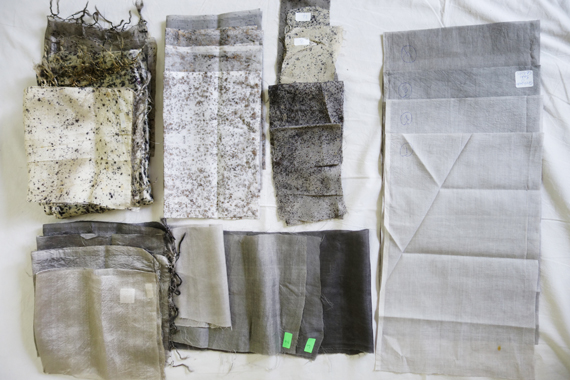
Spring 2016 colors
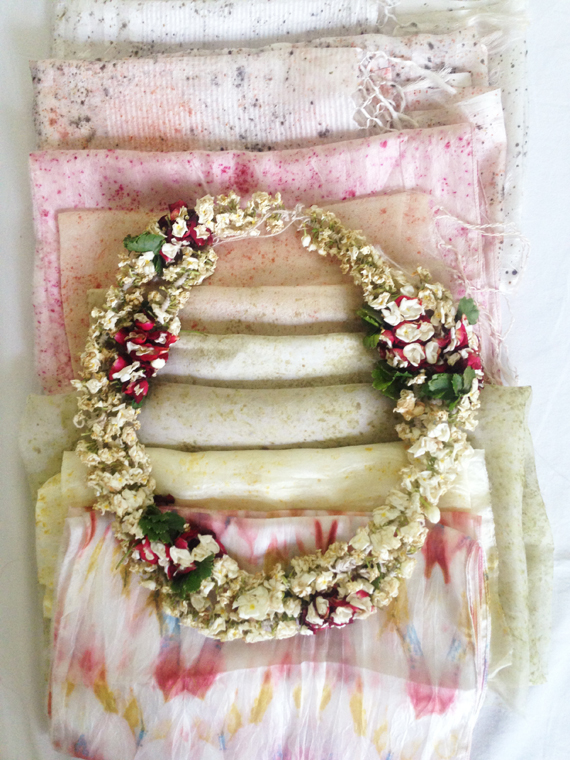
Summer 2016 colors